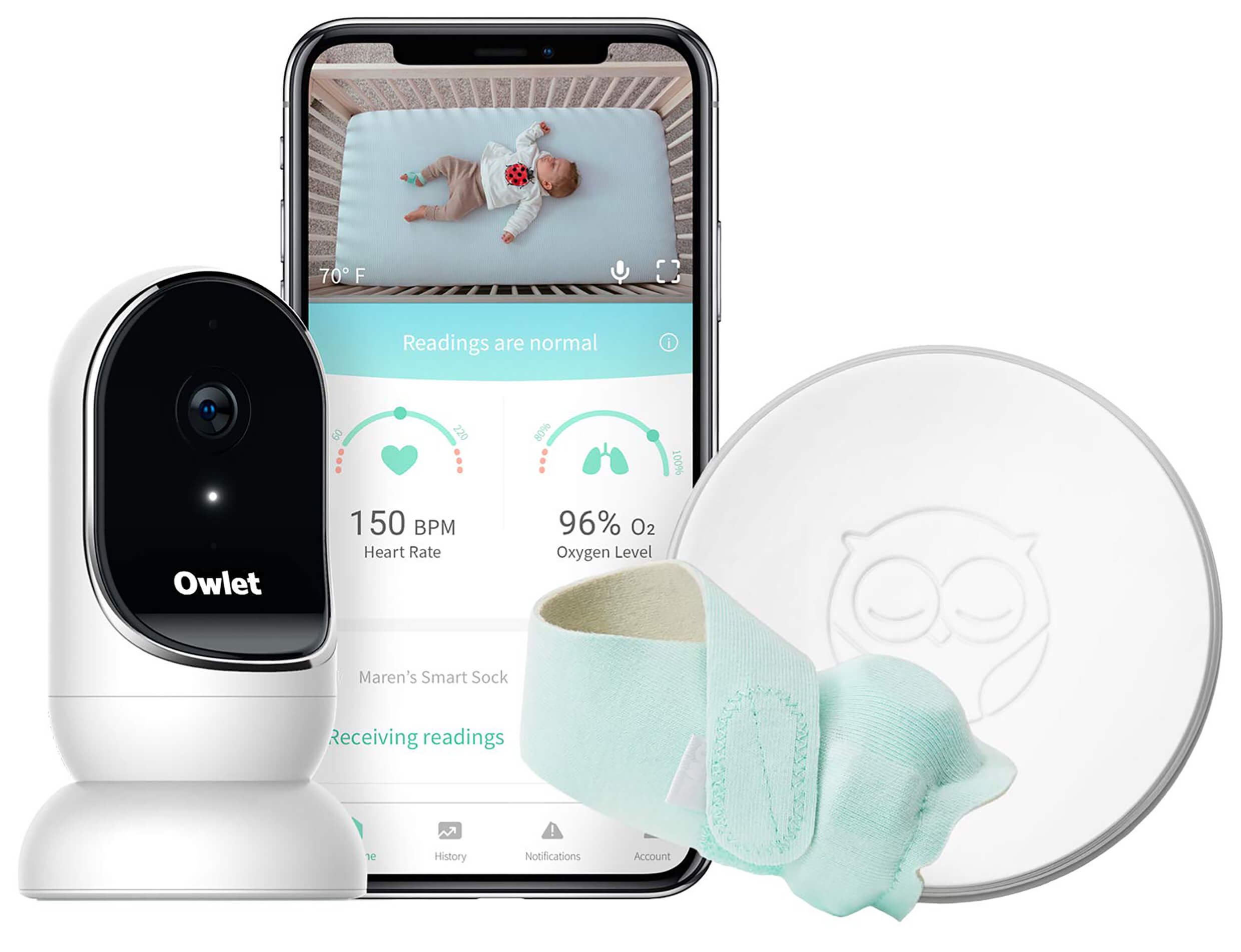
When the Fitbit tracker hit the market in 2009, it created a new niche for people to monitor their physical activity throughout the day. A waist clip-on, it was rudimentary compared to the advanced and sophisticated digital wearables of today that can collect real-time, continuous data of chemical and physical indicators in the body to chart its wellness.
Today, wearable gizmos like fitness trackers, smartwatches, and smart patches can continuously measure and collate blood pressure, oxygen saturation, heartbeat, calorie expenditure, sleep quality, breathing, and so on. Specialized wearables can also monitor the electrical function of the brain and heart to indicate neurological and cardiovascular conditions.
Step-by-step evolution
The digital health wearables market is estimated to hit 30 billion USD by 2026. Today, in the US, 30% of the entire population owns some kind of health tracker. But let’s do a little tracking of our own – how did this gigantic industry come into being?
Earlier, pedometers were an athlete’s companion to count their steps. Sports research was done via manual entries of data into spreadsheets, sometimes using devices like clunky wireless heart rate monitors. With time, as computers shrunk and fit into our pockets as smartphones, real-time monitoring became available to everyone. To achieve this, sophisticated sensors and trackers were developed, and a whole new class of digital wearables emerged.
The evolution was cemented when COVID hit, and the importance of ‘decentralized care’ increased. The requirement arose for remote health management, and telehealth bridged the gap as several patients and doctors worldwide were forced to receive and administer care ‘in place’ respectively. This has opened up research and development for wearable medical monitors that can remotely alert healthcare givers of their patient’s status. Automation in medical monitoring could help with chronic disease management, elimination of dependency on availability of staff to record vitals, better triaging of new patients, and careful post-op monitoring and care. It’s all a strategic game of having the correct data at the right time to draw insights from, and digital wearables look promising in this endeavor.
Current market size of Digital Wearable Tech
→ 16 billion USD in 2021
→ 30 billion USD in 2026
→ 60+ billion USD in 2030
Top countries with highest adaptation
→ USA
→ Spain
→ Turkey
→ Singapore
→ Switzerland
The digital health wearables market is estimated to hit 30 billion USD by 2026. Today, in the US, 30% of the entire population owns some kind of health tracker. But let’s do a little tracking of our own – how did this gigantic industry come into being?
Earlier, pedometers were an athlete’s companion to count their steps. Sports research was done via manual entries of data into spreadsheets, sometimes using devices like clunky wireless heart rate monitors. With time, as computers shrunk and fit into our pockets as smartphones, real-time monitoring became available to everyone. To achieve this, sophisticated sensors and trackers were developed, and a whole new class of digital wearables emerged.
The evolution was cemented when COVID hit, and the importance of ‘decentralized care’ increased. The requirement arose for remote health management, and telehealth bridged the gap as several patients and doctors worldwide were forced to receive and administer care ‘in place’ respectively. This has opened up research and development for wearable medical monitors that can remotely alert healthcare givers of their patient’s status. Automation in medical monitoring could help with chronic disease management, elimination of dependency on availability of staff to record vitals, better triaging of new patients, and careful post-op monitoring and care. It’s all a strategic game of having the correct data at the right time to draw insights from, and digital wearables look promising in this endeavor.
The Apple Watch features a ‘fall detector’, which also pairs up with iPhone to predict the probability of tripping over by analyzing gait using AI

Wellness Wearables — The ‘smart’ tracker of the time
Most commercial wellness wearables today come as wristwatches, fitness bands, or jewelry like rings. Apple introduced smartwatches in 2015, and the sleek wearable has since been a bestseller. Analysts estimate that in 2021, 100 million units were in use. The latest Apple series 7 contains an altimeter, accelerometer, barometer, gyroscope to monitor device orientation, heart rate monitor, electrical cardiogram reader, blood saturation monitor, and also basic calling capabilities in sync with iPhones, all accessible by touch. Google’s Fitbit is another popular option with over 120 million users worldwide. GARMIN, the GPS and navigation giant, is also a big name in fitness and activity tracking. They target sports enthusiasts like surfers, golfers, and avid runners and provide more specialized features in their smartwatches compared to Apple and Samsung’s well-rounded designs.
A smaller segment prefers less bulky alternatives to smartwatches. Smart rings like the Oura 3 cater to this audience, but they are pricier and have some ways to go in accuracy.
A survey by AppDynamics has found that 47% of people in UAE own a digital health wearable. Samsung Galaxy Fit 2, Xiaomi Mi Smartband, Fitbit Versa, MYZONE heart monitors, and Huawei Talkband are popular options in UAE, though Apple has bitten at least 50% of the market. While useful by themselves, these devices’ actual worth lies in their syncing capabilities with smartphones. Smartphone health apps like Strava, MyFitnessPal, and SWEAT then leverage this data in tandem with AI to deliver personalized exercise regimes, track calorie and water intake, measure sleep quality, and other assessments to augment the quality of users’ lives. For instance, the Apple Watch features a ‘fall detector’, which also pairs up with iPhone to predict the probability of tripping over by analyzing gait using AI.
TopBrands in Smartwatches
Quick Stats
- According to FutureMarketInsights, the global market for health digital wearables is going to grow to 60 billion USD in 2030.
- Wristwear accounts for 29.4% of the total global market. Apple globally accounts for 36% of the total shipments in 2022 Q1 and Samsung at 10% of the market share.
- The countries with highest adaptation rates are USA followed by Spain, Turkey, Singapore and Switzerland. Numbers are expected to rise rapidly in Russia and China. Currently North America is the largest consumer with 38% market share.
- By 2024, more than 160 million medical wearables units are expected to ship. The driving factors behind this boom are remote healthcare, pandemic after effects, health and wellbeing awareness, home diagnostics for chronic disease management.
Incorporating digital wearables as unobtrusive jewelry or wristwatches and soft clothing has been an immensely successful way to make this technology popular with mainstream audiences. People have worn rings and bracelets for millennia, and wristwatches have been around for almost a century. So, switching from a regular wristwatch to a smartwatch is a comparably low adoption hurdle. As a result, digital wearables are one of the most successful examples of TAM or Technology Adoption Model. This model predicts the success of any new technology commercially depending on its compatibility and perceived complexity of usage.
For athletes, wearables have revolutionized their training and fitness regime. Many parameters like the Heart Rate Variability or HRV and Sweat Rate that could only be measured in lab conditions with bulky equipment can now be constantly monitored. These parameters can help experts determine athletes’ fitness ability and probability of injury, providing a lot of predictive power to improve their performance. In addition, the sports industry envisions a future where a digital clone of every athlete and sports person can be created, allowing any fitness regime, treatment, and diet to be first tested on these clones to get a digital result.
Fitness tracker augmentation to sportswear is another upcoming market, with an estimated share of 5.3 billion USD by the end of 2022. Using special polymers, lightweight sensors get woven into fabrics to track movement and bodily functions and then relay the data to smartphones. Sensoria, a leader in this field, offers smart socks, smart upper garments, and sensor anklets as a real-time run tracking system.
Medical Wearables - Unburdening the healthcare system
Medical wearables are a marginally different vertical but have similar tech and integration capabilities with AI and cloud computing. 2021 saw an investment of over 50 billion USD in digital health products with a primary focus on telehealth and medical data analysis. These wearables carry the potential to revolutionize healthcare as they become mainstream and increasingly commercially viable. In most countries, the healthcare system is overloaded. Skilled personnel are critically needed yet acutely missed. Being a vital part of the medical triumvirate of ‘Monitoring’, ‘Data Analysis’, and ‘Predictive Prevention and Cure’, wearable tech is wholeheartedly welcome in healthcare. Automating the monitoring and diagnostics with wearables can shift that burden to free up health caregivers for more pressing, hands-on duties.
As technology evolves with better sensors and AI-backed data analysis tools, every patient’s medical history can be recorded with real-time monitoring that can provide great insights into disease prevention and cure. Patients with respiratory and pulmonary issues, chronic disorders like hypertension, diabetes, endocrine disorders, and cancers can be vigilantly monitored, complications anticipated, and drugs timely administered.


AI augmentation and sensors become more advanced. The user will get personalized suggestions as to what to eat that day and where they can go for their healthy meals in their vicinity
It is estimated that there are 450 million users of health wearables today ranging from biosensors to smart patches and smart clothing. Smart patches are small, unobtrusive patches adhered to human skin to collect data via microneedles and sensors and also to administer drugs. They are designed for single-function specialization like diabetes monitoring. Blood pressure monitors are very sought after but pricey wearables. Omron’s Blood Pressure monitor, the HeartGuide, costs 500 USD. Companies like Palarum are designing medical wearable clothing like smart socks for fall detection and post-surgery movement monitoring through motion sensors. Owlet specializes in pediatric monitoring for medical conditions and wellbeing alike.
Another promising lead is the development of insideables and implants. Implants like microchips under the skin can help with very accurate endocrine and hematologic monitoring. Insideables refer to hard capsules that can be swallowed to place sensors inside the body to measure organ functions. Both technologies appear fantastic and akin to science fiction, but several insideables are awaiting government approval to enter clinical trials. So, these technologies are not very far away on the horizon.


The want vs. the need
Wearables have seen rapid growth in the past few years with breakneck innovation and mounting funding. But this technology is still in its infancy. Present commercial models come with accuracy issues. For example, smartwatches can be fooled with hand or hip moment to mimic walking, hence getting erroneous data. Another major concern today is privacy policies. Many companies like Fitbit have revealed personal data captured on their website. There are concerns that this data will be used for targeted advertisements.
Also, wellness wearables have short-term studies to support them, but long-term study data is yet to reveal its learnings. Health wearables achieve good short-term results by ‘prompting’ and continuously monitoring users to make healthy decisions. But forming lifelong healthy habits is a tall order requiring human intervention, self-motivation, and willpower. Users of wellness wearables agree that these gadgets are great for raising awareness around health, but most users do not deem them vital to their health routines.
In our anecdotal survey, Saptaparni, a 28-year-old business analyst, mentions that the maximum benefit of her smartwatch is increasing her step count. This is a great habit as sitting is considered the new cancer today. For her, the other most used features are gauging sleep quality and monitoring heart rate as precautionary measures to catch any problems beforehand.
It has been suggested that wellness wearables will actually become indispensable once AI augmentation and sensors become more advanced. Then, the wearables can interact with their users on an entirely different level. For example, rather than just displaying the calorie expenditure, the user will get personalized suggestions as to what to eat that day and where they can go for their healthy meals in their vicinity. An increase in cortisol in the user’s bloodstream will prompt the wearable to advise the user to perform any form of immediate exercise to reduce stress.
With serious attention and funding, the technology expects an iterative improvement in leaps and bounds, making digital wearables an inevitable reality of everyday life.

